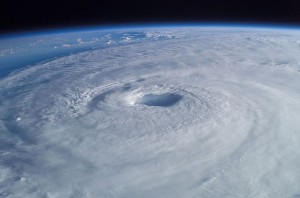On the 20th and 21st of February we had our annual School of Natural Sciences Postgraduate Symposium. Over the course of two days many of our PhD students presented their work to the School. We also had two interesting plenary talks from Dr Sophie Arnaud-Haond (Ifremer) and Dr Lesley Morrell (University of Hull). Unfortunately our third speaker, Dr Fiona Jordan (University of Bristol) had to cancel due to illness.
For those of you who are interested in exactly what we work on here at EcoEvo@TCD, here are the abstracts from the PhD student presentations. Check out the TCD website for more details!
Sven Batke: High energy weather events – long term responses on forest canopies and epiphytes
High energy weather events are often expected to play a substantial role in biotic and abiotic forest dynamics and large scale diversity patterns but their contribution is hard to prove. In this study we modelled cumulative hurricane impacts at Cusuco National Park, Honduras. The model was validated on the ground and microclimate and epiphyte data were collected along the forest profile and the modelled hurricane impact gradient. During this talk preliminary data will be presented that highlights the importance of including such events in understanding current abiotic and biotic canopy dynamics.
Qiang Yang (Marvin): The multidimensionality of ecological stability: A theoretical study
Understanding the factors that determine the stability of biological communities has been a focal point of ecological research for decades. However, a challenging aspect of stability is its many components, including asymptotic stability, resilience, resistance, robustness, persistence and variability. However, in spite of its multidimensionality, the few studies that measured multiple components of ecological stability simultaneously considered them as independent and therefore analysed them separately and we know remarkably little about the mechanisms underpinning relationships among components of stability and whether there are any general features of these relationships that are common across ecosystems.
Here by simulating the dynamics of distinct food-web structures following a range of perturbations on the species abundance in these food webs in silico we quantify 1) the general relationships among different stability components, 2) the effects of the strength of perturbations (i.e. the extent of biomass loss), the structure of food webs (i.e. trophic levels and connectance) and the individual species (i.e. its trophic position, generalist/specialist, omnivorous/monophagous) on the multivariate relationships among components of ecological stability in a range of food-web structures.
Mirjam Ansorge: Infectious diseases in squirrels and their importance for human health*
*Highly commended
It is well known that emerging infectious diseases like HIV or SARS have their origin in primates, and understanding the drivers for parasite sharing between humans and our closest relatives is an important factor for human health. However, some of the worst pandemics in history came from more distantly related animals. For example, the bubonic plague, which erased almost half of Europe’s human population in the 13th century, and was transmitted by fleas living on rats. This suggests that we should also investigate diseases in species that are not closely related to humans but that do come into contact with humans regularly. Squirrels are ubiquitous and share our parks and forests. Because they are considered non-threatening and often used to human presence, they are likely to have contact with humans and therefore to transmit parasites and vectors, such as fleas. These contacts can result in serious diseases in humans such as plague. I reviewed the recorded distribution of disease carrying squirrels in the USA from 1978 to 2002 and analysed the geographic range of parasites and parasite species richness in squirrel species. I will also discuss the importance of squirrels for human health.
Sai Krishna Arojju: Association mapping of agriculturally important traits in perennial ryegrass (Lolium perenne L.)
Linking genotypes to phenotypes and explain the natural phenotypic variation in terms of simple changes in DNA sequences is a major objective in plant breeding. Association mapping is a method which can be employed to search for genotype-phenotype correlations in individuals without population structure to identify co-segregation of genetic markers and phenotypes. This project aims to conduct an association mapping study in 1800 genotypes of Lolium perenne under three experimental regimes (1) simulated grazing management, (2) silage management and (3) persistency grazing management with 2 clonal replicates in a randomised block design. Each replicates consists of 40 blocks with 50 plants. 30 populations with different background have been selected for this study (10 released varieties, 8 half-sib breeding families, 8 full-sib breeding families and 4 Irish ecotypes). Genotyping will be performed by developing genotyping by sequencing (GBS) libraries for Illumina HiSeq2000 sequencing and we will also combine this with phenotyping on a range of forage quality traits including biomass accumulation, lignocellulose determination, flowering time, tillering capacity and digestibility on Lolium accessions. Variations in candidate genes of forage quality traits will also be examined.
William Burchill: Closing the farm nitrogen balance at Solohead Research Farm
Nitrogen use efficiency on Irish dairy systems tends to be low and leads to high farm-gate N surpluses (N imports minus N exports passing though the farm gate). The objective of this study was to quantify all N flows on a white clover based system of dairy production at Solohead Research farm from January 2011 to December 2012 and to account for surplus N. The system was rotationally grazed at a stocking density of 2.35 cows ha-1 received annual fertiliser N input of 112 kg ha-1 (BNF) was quantified using two 15N isotope techniques. A 15N gas flux and static chamber method were used to quantify N2 and N2O emissions, respectively. Inputs (fertiliser N, BNF, feed and rainfall deposition) and outputs (milk and livestock sales) of N (kg ha-1) from the system were 274 and 80 respectively, with a farm-gate surplus of 194 kg ha-1 in 2011. Total measured N losses (kg ha-1) were 210 including 19, 43, 25, and 123 as N leaching, NH3, N2O and N2, respectively. The results of the present study indicate that a large proportion of Irish dairy systems N surpluses are returned to the atmosphere as environmentally benign N2 gas.
Donna Hawthorne: Fire, human and climate interactions throughout the Holocene
Significant changes in global and regional climate as well as changes in vegetation, land use, agriculture and policy, have promoted an increase in fires in the Irish landscape. To understand these changes the interrelationship between fire, climate and people will be explored. Past climatic oscillations have been studied at 8 sites throughout Ireland in an attempt to understand the current climatic changes which may mirror future patterns in climate. The landscape character and fire regime of each of these sites will be reconstructed and will seek to develop a model of risk assessment and management for future fire in the Irish landscape. The data span from the early Holocene to the present day, drawing on charcoal and pollen data, radiocarbon dating, and mineral and chemical data from lacustrine sediments. This work presents the first chronological comparison of regional fire activity across various locations throughout Ireland, and provides a base line level of data which can be drawn on in future scenarios when fire frequency is expected to increase. This work is in its third year of a four year PhD programme and preliminary discussions and results will be presented.
Louise Esmonde: Toxicity assessment of the agricultural pesticide Roundup Pro Biactive using Myriophyllum aquaticum and other test organisms.
Pesticide use in Ireland has increases over the last number of years yet its impact on the environment and in particular freshwater ecosystems is still not fully known. This study examines the toxicity of agricultural pesticides on non-target organisms with special reference to submerged macrophytes. In this study the toxicity of the herbicide Roundup Pro Biactive (active ingredient glyphosate) was examined using the plant species Myriophyllum aquaticum. Plant shoots were exposed to Roundup Pro Biactive concentrations of 0.01%, 0.1%, 1%, 5% and 10% for a period of 14 days. After the test period the response of the plant to the herbicide was measured in terms of wet weight, dry weight, shoot length, root length and root number with Relative Growth Rates (RGR) and EC50 values being calculated at each concentration. Preliminary results show a clear difference between the relative growth rates of control and test specimens. At concentration above 1% significant reductions in relative growth rates were recorded and physical deterioration of shoots was observed at concentration above 0.1%. Further studies will focus on the toxicity of five other agricultural pesticides on these same test species.




